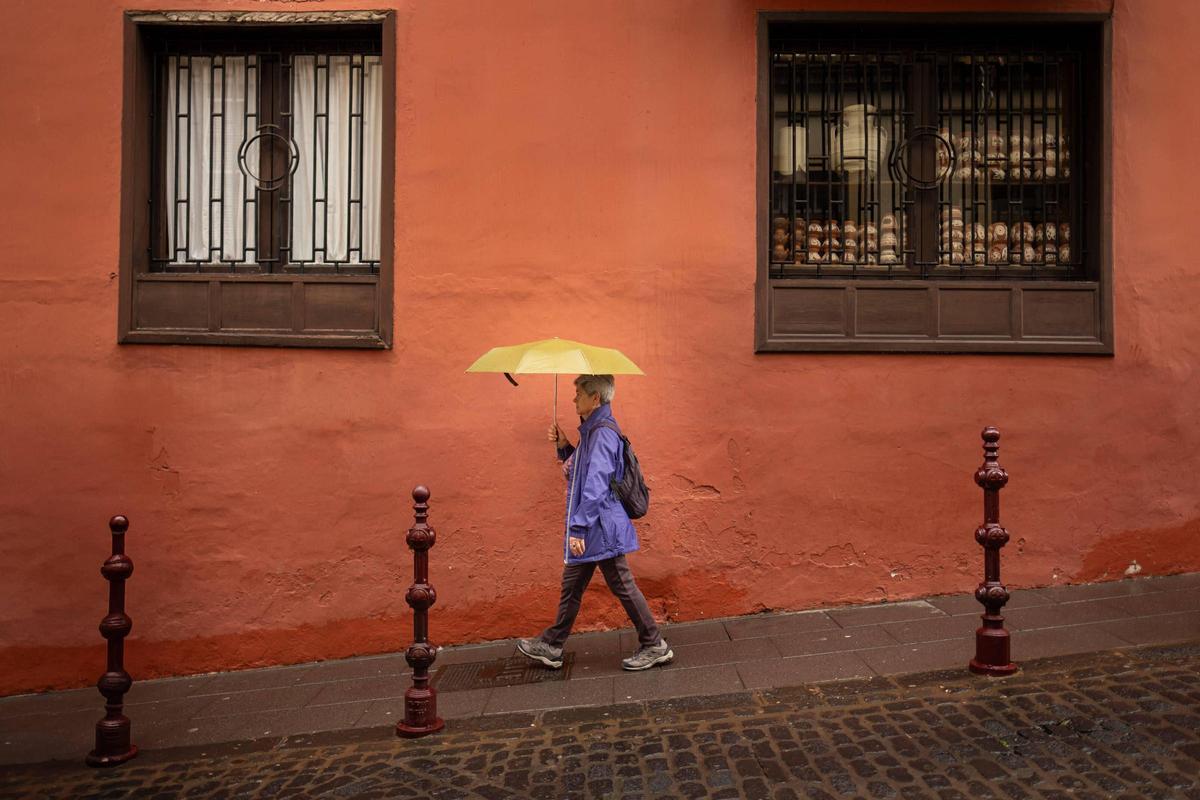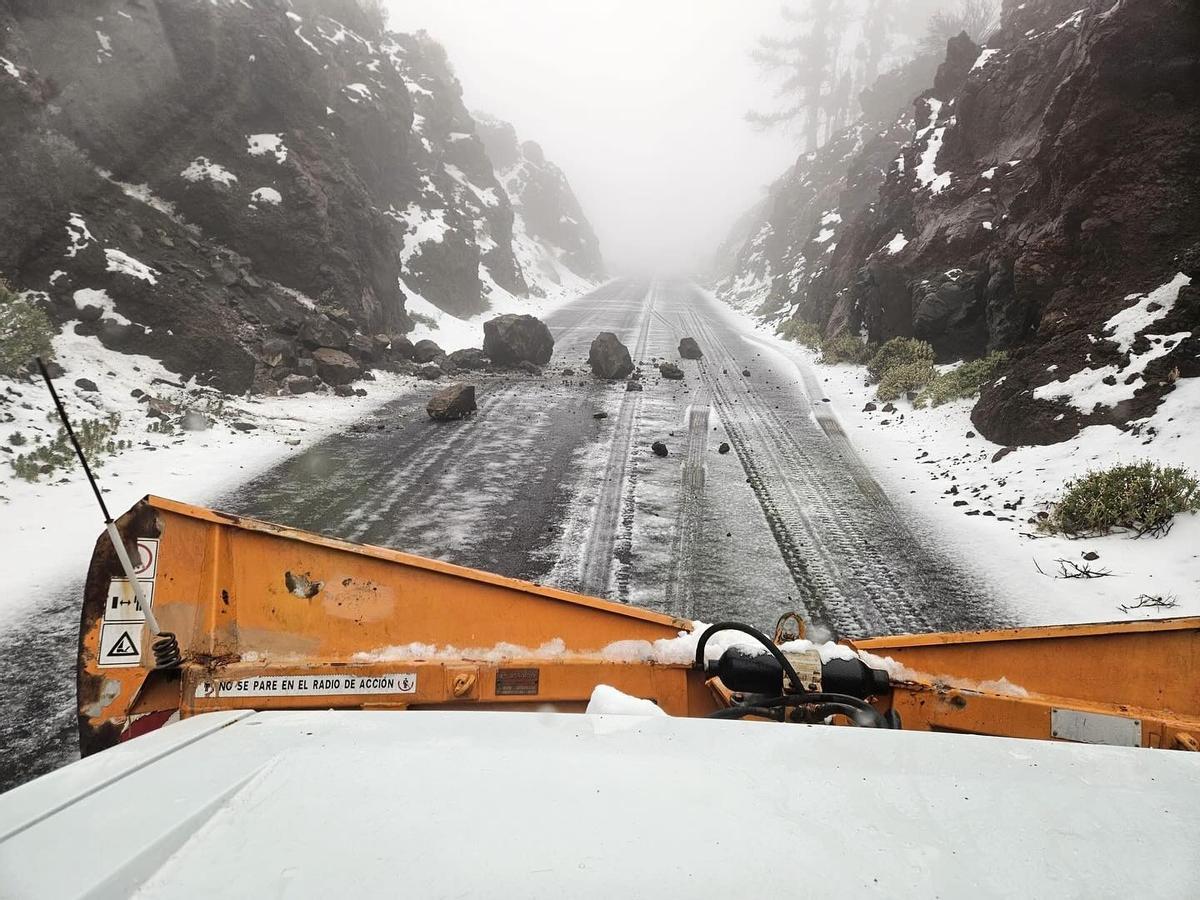On a day when fortune has distributed millions in small quantities, the peak of Tenerife has experienced a different kind of luck. A layer of snow has adorned the National Park just two days after the onset of winter. The Canary Islands thus embrace the winter season with one of the most iconic images of Christmas: the magnificent Teide dressed splendidly.
Rainstorms reached the Islands last Saturday due to a weather front linked to a shallow storm, which nevertheless left accumulations exceeding 30 litres per square metre in various locations across Tenerife and Gran Canaria. This Sunday, the scenario repeated itself. According to data from the State Meteorological Agency (Aemet), several towns in Tenerife, such as Santa Cruz de Tenerife, Puerto de la Cruz, La Laguna, and Roque de Los Muchachos, were already recording accumulations of up to 9 litres per square metre early in the morning. Izaña, where the precipitation fell as snow, had already registered 17.6 litres per square metre by 10:00 AM. The rain persisted throughout the day, with El Roque de Los Muchachos in La Palma recording up to 36.6 litres per square metre for the entire day, Izaña concluding with 26.4 litres, and San Juan de la Rambla noting 24 litres, indicating that northern Tenerife was one of the wettest areas throughout the day. Santa Cruz de Tenerife, generally not known for heavy rain, also received substantial downpours, amassing 14.8 litres per square metre.
Access Restrictions
The snowfall served as a pre-Christmas gift for the Canaries, albeit only visible from afar. The accumulation of ice and snow along the roads soon necessitated the closure of all access routes to Teide National Park. Therefore, from the early hours of this Sunday, access was prohibited via La Esperanza (TF-24), La Orotava (TF-21), and Chío (TF-38). “This second day of winter brings us a snowy Teide, visible from a distance—a scene that highlights the beauty and uniqueness of our island, as well as the importance of caring for it and acting responsibly,” summarised the president of the Tenerife Cabildo, Rosa Dávila.

A woman shelters from the rain in La Orotava with her umbrella / Arturo Jiménez
In her remarks, the Minister of Natural Environment, Sustainability, Security, and Emergencies, Blanca Pérez, supported the closures and urged citizens to adhere to the regulations and access restrictions for the National Park. “Our aim is to ensure the safety of individuals. Therefore, it is essential to follow the directives of the Security Forces and Bodies and refrain from unnecessary trips to the area until conditions are deemed safe,” she emphasised. The access restrictions will remain until it is safe to use those roads. In fact, due to the hazardous weather conditions, interventions were also required at various points on the island to clear obstructions caused by landslides. This included areas in El Teide, Masca, and even along the TF-5.
The storm also resulted in a general decline in temperatures, both minimum and maximum. During the day, the maximum temperatures barely surpassed 20 degrees across most Aemet observation stations. The highest temperature recorded was 22.9 degrees in Tazacorte (La Palma).
Conversely, minimum temperatures also fell, particularly at higher altitudes where sub-zero readings were observed. Izaña, registering 1.5 degrees below zero, was the coldest location in the Canary Islands. El Roque de Los Muchachos in La Palma closely followed at 0.7 degrees below zero. However, snowfall remained minimal on the summit of La Palma, though some ice did accumulate.

Emergency response in Teide National Park following several landslides / On loan
Coastal regions also experienced chilly minimum temperatures. In Agulo, situated to the north of La Gomera, the recorded minimum was 10.4 degrees. This was matched in San Juan de la Rambla, located in northern Tenerife. In locations like Santa Cruz de Tenerife, minimum temperatures reached 13.5 degrees, while thermometers in northern Gran Canaria dipped to 15.7 degrees.
Meteorological Mixed Bag
The fleeting joy of snow and the winter chill are not expected to linger. As this storm concludes its disturbances over the Islands, haze will likely resurface, leading to the possibility of mud-laden rains this Christmas Eve and substantial suspended dust readings on Christmas Day.
Aemet has issued a yellow warning for rain on Monday in Gran Canaria and Lanzarote (at dawn), in Tenerife during the morning, and in La Palma until the evening. Showers, which may be locally heavy, are predicted to come with very strong gusts of wind on the northern and eastern slopes of the mountainous islands. Snowfall is also expected to continue above 2,000 metres.
On the same Monday, a layer of suspended dust from the African continent will begin to permeate the Islands, which means that rain in certain areas may be tainted with mud. The influx of dust is anticipated to become more intense by Tuesday, along with the probability of mud rains. For Christmas Day, with the cold front having cleared, haze will heavily blanket the entire Canary Islands at lower atmospheric levels, subsequently decreasing visibility and impairing air quality.
For the 26th, the weather pattern over recent days is likely to develop into a cold low, maintaining cloudiness and rainfall across all islands, though with a higher intensity and likelihood on the western islands.















